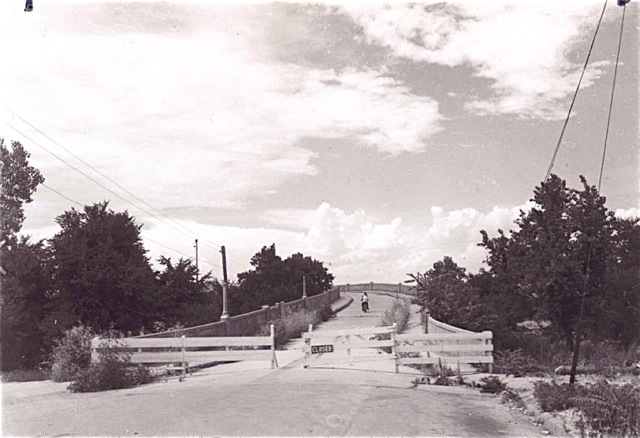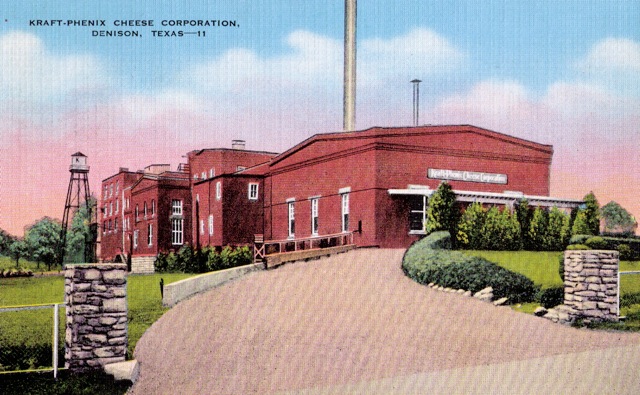Knaur
Family Business #4
John Simon Knaur
George
Clifford Knaur
Knaur Cheese Factory
John Simon Knaur and
his son George established the first cheese factory in the Texoma area.
In
1928, Knaur built a small brick structure, very similar to his Diamond
Ice plant.
The building, which still stands, is located at the south end of the
Austin
Avenue viaduct, at 809–11 South Austin Avenue. In those days, however,
the
former viaduct came down behind the building. When the new viaduct was
constructed in 1954, it came within a few feet of the front door of the
building.

West
side of viaduct, 1990s.
On
the right, the old buidling that held Simms Candy Company & the
first Kraft
Cheese plant. Knaur
Cheese preceded Kraft in that building.
|

South
end of Austin Avenue Viaduct, 1990s, looking south.
The viaduct is out front (left), while the west (right) side shows the
Kraft Building (far right). These buildings are still standing.
Knaur Cheese preceded Kraft in that building, & Simms Candy
followed it. |


Old Viaduct, ready for demolition, 1954
Courtesy of Billy Holcomb, who wrote: "End of the old Viaduct--Morgan
at Rusk, at Munson Stadium."
There were several
large dairy farms in the Denison area. It seems likely that these
supplied the
raw material from which cheese was made. Perhaps something in the
Knaurs'
German heritage inspired them to begin manufacturing this product.
Only in 1929 did the
Denison City Directory list the Knaur Cheese Manufacturing Company.
President
was John S. Knaur. S. C. Whitten
served as superintendent. In 1929, John Knaur persuaded the Kraft-Phenix
Company to take over the
small cheese factory.

Kraft-Phenix Cheese Corporation
Postcard postmarked 1941
His obituary says that he
was instrumental in bringing
Kraft to Denison. The cheese-making operation grew rapidly. Kraft Foods
moved
it to larger quarters in 1930. The company was a mainstay of the
Denison
economy during the Great Depression.
When Kraft Foods
vacated the Knaur Cheese building, Ashburn’s
Dairy used it
for many years. The Simms
Tobacco Company
eventually took it over. Since that firm moved out in the
early 1950s, the building has been occupied by many merchants.



